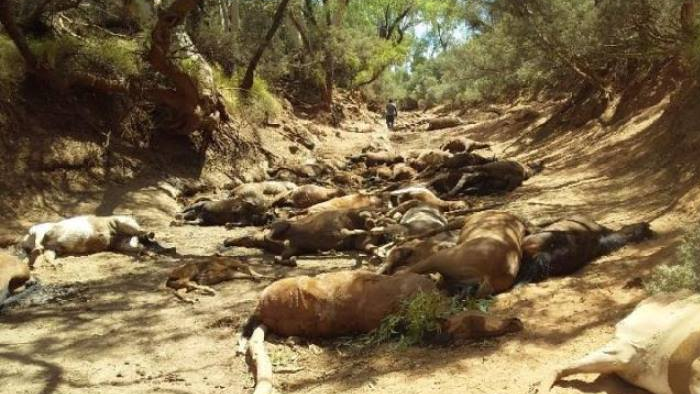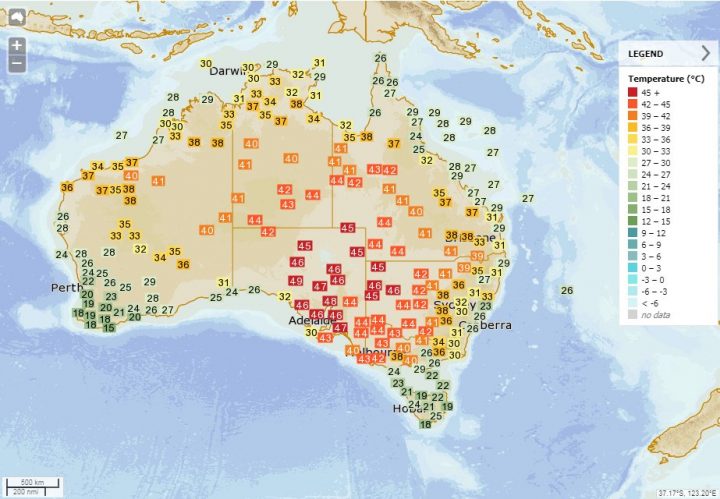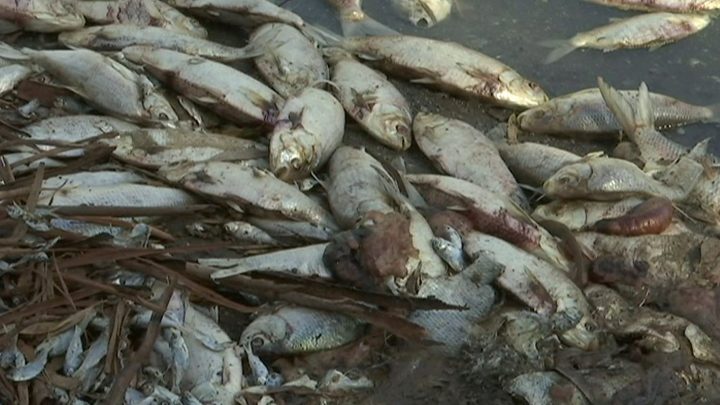While many Canadians and Americans suffer through the depths of winter, blistering summer temperatures are wreaking havoc with Australia‘s environment, killing animals, cooking fruit and toppling decades-old heat records.

Adelaide set a record for the highest temperature ever recorded in an Australian city Thursday, when the heat peaked at 46.6 degrees Celsius. Adelaide’s previous record of 46.1 Celsius was set on Jan. 12, 1939. The city of 1.3 million people is the state capital of South Australia, where temperatures are typically milder than in the north.
WATCH BELOW: Scientists predict more storms, floods, droughts and fires

Temperatures hit 49.1 Celsius in Port Augusta, approximately 300 kilometres north of Adelaide, on Thursday afternoon.
One Adelaide bar offering free beer while the temperature remained above 45 Celsius ran dry after two hours. The Red Lion Hotel ended up giving away more than 700 litres of beer during that time.
“We probably thought it would come around one day, but we didn’t think it would be for such a prolonged period,” Stephen Firth, manager of the Red Lion Hotel, told The Associated Press.
Forecasters are predicting the temperatures will remain high across the country on Friday and through the weekend.
The communities of Camooweal and Cloncurry, in northwest Queensland, registered their 40th consecutive day of temperatures over 40 Celsius, according to the Bureau of Meteorology.
Australia has been struggling through a devastatingly hot summer season that has toppled temperature records across the country. A prolonged drought has also led to major wildfires in the southeast.
Bureau of Meteorology forecaster Rob Sharpe told The Associated Press that this month might go down as the hottest January on record.

Get daily National news
December, January and February are typically the hottest months of the year in Australia, which tilts toward the sun at the same time North America leans away from it.
WATCH BELOW: Why are we complacent about climate change?

However, Australia got an early start on summer with a major heatwave in November. The high temperatures have ushered in drought-like conditions and triggered mass die-offs among some of Australia’s wildlife.
One man in central Australia stumbled upon more than a dozen dead horses in a dried-up watering hole last week, near Santa Teresa. The wild horses were all clustered together in the dried mud.

The region has been in the grips of a heatwave that routinely pushes the temperature above 40 Celsius.
An estimated 23,000 spectacled flying foxes, a breed of bat native to northeastern Australia, are thought to have died since November, according to ecologist Justin Welbergen. He and a team of researchers at Western Sydney University have been counting the dead all season. They also run a tracking website that watches for conditions above 42 Celsius – a potentially fatal threshold for the bats.
“We have lost close to a third of the entire species in Australia,” Welbergen, of the Hawkesbury Institute for the Environment, told ABC. “These are certainly very serious wildlife die-off events and they occur at almost Biblical scales.”
A similar die-off swept through Australia last January when hundreds of baby bats dropped dead out of the trees.
This year’s intense heat has also affected Australian farmers. Kris Werner, head of Dried Tree Fruits Australia, told ABC that many growers are losing their crops to the extreme temperatures. Werner says his stonefruit (i.e. peaches and nectarines) have been cooking on the tree branches.
“They burn on the inside, they become squashy and you can’t use them,” Werner told ABC.
State authorities in New South Wales started using aerators to pump oxygen into waterways last week after approximately 1 million fish turned up dead in the Darling River near Menindee.
Minister for Regional Water Niall Blair said the deaths were caused by the intense heat, which can trigger droughts and algal blooms that starve waterways of oxygen.
Blair said using aerators on the river was a “Band-Aid” solution.
“Nothing will stop this fish kill unless we get proper river flows and water levels in our dams back up to normal,” he told reporters on Jan. 15.
“We are doing everything we can to try and limit the damage.”
Australian National University water expert Daniel Connell said many more fish would likely die amid the ongoing heatwave.
“It’s a very predictable crisis,” he told The Associated Press last week. Connell blamed part of the crisis on those who draw water out of the river to irrigate their land during the drought.
“By massively reducing the amount of water in the system, you produce much hotter water, you produce conditions that are much more conducive to algal blooms,” he said.
Last year was Australia’s third-warmest on record.
— With files from The Associated Press











Comments